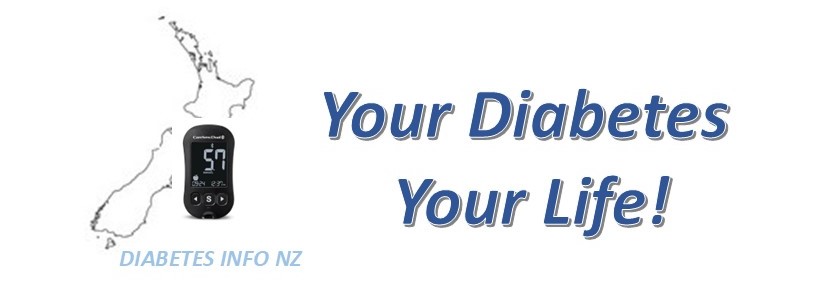Causes of Type 2 Diabetes
Type 2 diabetes is a progressive, long-term condition that affects how the body regulates blood glucose (sugar). It develops when the body becomes resistant to insulin and when the pancreas is unable to produce enough insulin to meet the body’s needs. Insulin is a hormone that helps move glucose from the blood into the cells for energy. Without enough insulin or when the body stops responding to it properly, glucose builds up in the bloodstream. Over time, high blood glucose levels can lead to complications affecting the heart, blood vessels, eyes, kidneys, and nerves.
A central feature of Type 2 diabetes is insulin resistance. This means that the body’s cells—especially in muscle, fat, and liver tissue—become less responsive to insulin’s effects. As a result, the body tries to compensate by producing more insulin. For a while, this can keep blood glucose levels in check. But over time, the pancreas may become unable to keep up, and blood glucose begins to rise. This combination of insulin resistance and declining insulin production is what leads to the development of Type 2 diabetes.
The causes of insulin resistance and Type 2 diabetes are complex and multifactorial. Genetics play an important role—having a close relative with Type 2 diabetes significantly increases risk.
However, genetics alone don’t explain the rise in cases; environmental and lifestyle factors are major contributors. These include:
- Excess body fat, especially around the abdomen, which contributes to insulin resistance.
- Low levels of physical activity, which can reduce the body’s ability to use insulin effectively.
- Unhealthy eating patterns, such as diets high in processed foods, sugary drinks, and refined carbohydrates.
- Chronic stress and poor sleep, both of which can disrupt insulin function and hormone balance.
- Ageing, as insulin resistance tends to increase with age.
- Hormonal conditions, such as polycystic ovary syndrome (PCOS), which is associated with insulin resistance.
Sociocultural and environmental factors also play a critical role. These include:
- Limited access to affordable and nutritious food (food insecurity).
- Lack of safe spaces or time for physical activity.
- Barriers to healthcare, including cost, transportation, and culturally safe services.
- The lasting impact of colonisation, systemic racism, and intergenerational trauma, which can affect wellbeing and access to care.
Some populations—including Māori and Pacific Peoples, South Asians, and African communities—face higher rates of Type 2 diabetes, not because of their ethnicity per se, but on account of the social and economic inequities that continue to shape health outcomes over time.
Understanding the diverse and interconnected causes of Type 2 diabetes—including insulin resistance, lifestyle and social determinants—can help support prevention and care efforts that are empowering, respectful, and tailored to people’s realities, values, and cultural contexts.
Genes and Type 2 Diabetes
Type 2 diabetes can run in families due to a combination of genetic, epigenetic, and shared environmental or lifestyle factors. We inherit our DNA from our parents – half and half. And whilst certain genes can increase our risk of developing type 2 diabetes, it’s the complex interplay of a whole host of factors that will finally determine the outcome. Remember, many of these factors are able to be influenced by YOU and it’s never too late…
Which genes?
The genes most strongly associated with Type 2 diabetes risk are related to:
- How your body produces insulin
- How your body responds to insulin (insulin resistance)
- How your body stores and uses glucose (sugar)
Some specific genes that researchers are confident are involved include:
- TCF7L2 – linked to insulin production and blood glucose regulation.
- FTO – associated with obesity, which increases diabetes risk.
- KCNJ11, PPARG, SLC30A8 – affect insulin secretion or beta-cell function.
Having a parent or sibling with type 2 diabetes doubles to quadruples your risk, especially if both parents are affected.
“Epigenetics”
Epigenetics refers to changes in gene expression that don’t involve alterations to the underlying DNA sequence—essentially, it’s how your environment and lifestyle can affect how/when genes are turned on or off.
In the context of Type 2 diabetes, epigenetics helps explain how factors like diet, physical activity, stress, sleep, and even early life experiences can influence a person’s risk of developing the condition.
Gene Expression & Metabolism
Epigenetic changes can affect how genes involved in glucose metabolism, insulin production, or insulin sensitivity behave. For example, poor diet or chronic stress might lead to chemical tags (like DNA methylation) that silence genes needed for insulin production.
These changes can impair the body’s ability to regulate blood sugar over time.
Intergenerational Effects
Epigenetics also helps explain why Type 2 diabetes can run in families—not just because of inherited genes, but because parents’ experiences and environments (like poor nutrition during pregnancy) can influence gene expression in their children. This is especially important in Indigenous and marginalized communities where historical trauma, colonization, and socio-economic disadvantage may shape long-term health risks.
Reversibility
One powerful aspect of epigenetics is that it’s modifiable:
Lifestyle changes like improved diet, regular exercise, stress reduction, and sleep can potentially reverse harmful epigenetic marks.
This means people aren’t locked into a future with diabetes even if they have a family history—they can influence how their genes behave.
These are changes in how genes are expressed (turned on or off) based on environmental or lifestyle factors.
Some of these changes can be passed from one generation to the next.
For example: If a parent had high blood sugar or poor nutrition during pregnancy, it might affect the child’s metabolism later in life.
Shared Lifestyle Factors
Families often share habits around:
- Food choices
- Physical activity
- Sleep patterns
- Stress and coping strategies
These behaviors can contribute to obesity, insulin resistance, and type 2 diabetes, especially in people with genetic risk.
In summary, Type 2 diabetes runs in families because:
You inherit genes that may predispose you.
Family environments often support habits that increase risk.
Gene expression can be shaped by family experiences across generations.
